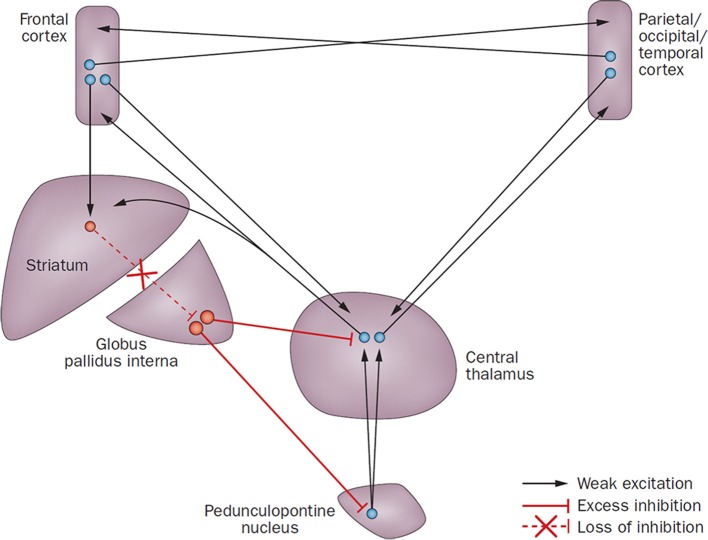Figure 1.
The mesocircuit model underlying forebrain dysfunction and interventions in severe brain injuries (From Giacino et al., 2014, with permission). Reduction of thalamocortical and thalamostriatal outflow following deafferentation and neuronal loss from the central thalamus withdraws the afferent drive to the striatum, which may then fail to reach firing threshold because of their requirement for high levels of synaptic background activity. Loss of active inhibition from the striatum allows neurons of the globus pallidus interna to tonically fire and provide active inhibition to their synaptic targets, including relay neurons of the already disfacilitated central thalamus, and possibly also the projection neurons of the pedunculopontine nucleus. Since the GABAA a-1 subunit is normally expressed in large quantities in the globus pallidus interna, zolpidem could inhibit the latter, substituting its normal inhibition from the striatum, and hence induce an increase of the thalamic excitatory influence on prefrontal cortices.

